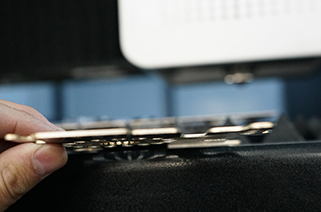
Since the beginning of the 21st century, fiber laser cutting machine cut pipe have been continuously developed, laser cutting technology will be applied in various fields, and more and more suitable materials will be used. According to the different characteristics of different materials, the matters needing attention when using the fiber laser cutting machine are also different.
Structural steel
Good results will be obtained when the material is cut with oxygen. When using oxygen as the processing gas, the cutting edge will be slightly oxidized. For plates up to 4mm thick, nitrogen can be used as a processing gas for high-pressure cutting. In this case, the cutting edge will not be oxidized. For plates with a thickness of more than 10mm, use special plates for the laser and apply oil to the surface of the workpiece during processing to obtain better results.
Stainless steel
Cutting stainless steel requires: use of oxygen, in the case where the edge oxidation does not matter; use nitrogen to obtain a non-oxidized and burr-free edge, no further treatment is required. Coating oil film on the surface of the board will get better perforation effect without reducing the processing quality.
Aluminum
Despite its high reflectivity and thermal conductivity, aluminum materials up to 6mm in thickness can be cut, depending on the alloy type and laser capabilities. When cutting with oxygen, the cutting surface is rough and hard. When using nitrogen, the cut surface is smooth. Pure aluminum is very difficult to cut because of its high purity. Only when a "reflection absorption" device is installed on the system can aluminum be cut. Otherwise the reflection will destroy the optical components.
Titanium
Titanium sheet is cut with argon and nitrogen as processing gases. Other parameters can refer to nickel-chromium steel.
Copper and brass
Both materials have high reflectivity and very good thermal conductivity. Brass with a thickness of less than 1mm can be cut with nitrogen; copper with a thickness of less than 2mm can be cut, and the processing gas must be oxygen. Copper and brass can only be cut when a "reflective absorption" device is installed on the system. Otherwise the reflection will destroy the optical components.
Synthetic material
When cutting synthetic materials, keep in mind the dangers of cutting and the dangerous substances that may be emitted. Synthetic materials that can be processed are: thermoplastics, thermosetting materials, and elastomers.